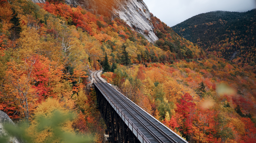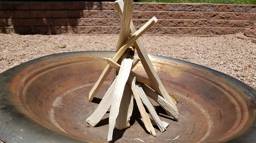
Let’s say you dream of hiking the Enchantments, that magical 17-mile traverse that winds through otherworldly mountain tarns and rocky spires in Washington State’s Alpine Lakes region. What stops you, however, is the prospect of schlepping a 50- to 60-pound pack up the steep and treacherous passes.
Not only that, but the mere idea of gathering all your stuff together – two-person tent, heavy-duty sleeping bag, stove, pillows, camp chairs, etc. – and somehow stuffing it all in your expedition-size backpack is daunting enough in itself.
But what if your fully packed backpack weighed only 15 or 20 pounds? And 17 miles doesn’t seem so far when you’re not wearing those stiff, heavy hiking boots that weigh 2 pounds each and reward your efforts with an assortment of quarter-sized blisters to boot.
See also Road Trip Guide: Flathead Lake in Western Montana
That’s the theory behind one of the hottest trends in hiking and backpacking: going light. Also known as light-hiking, light-packing and ultralight (among other names), it refers to the same thing: carrying a lot that doesn’t weigh a lot.
Take a Load Off
Instead of burly high-topped hiking boots (AKA, blister-makers), wear trail-running shoes. They’re also cheaper – starting at $70 vs. $200 for quality boots.
Instead of that mega-tent you purchased at one of the big-box membership stores, consider a bivy sack – a lightweight personal shelter which protects you from the elements and creepy-crawlers – that fits right over your sleeping bag and only costs around $100.
High-quality, three-season sleeping bags have come down to little more than a pound in weight as well. These may cost a little more ($200 and up), but they are among the key weight- and space-savers when it comes to going light.
See also Grilled Corn on the Cob
Speaking of space, don’t take so much. Choose a much smaller backpack – say, one with a 2,000-cubic inch capacity, as opposed to one in the 5,000-cubic-inch range that is usually recommended for multi-day trips. Prices start at about $100. For shorter trips, adjust your tastes. Forget the stove and the fuel that goes with it and carry food that’s already prepared: energy bars and the like, and/or portable food you’ve prepared yourself such as bagels slathered with protein-rich peanut butter. Or, if you must carry a stove, lightweight ones made by companies such as MSR weigh in at about 8 ounces.
But Stay Safe
All this emphasis on traveling light is not to imply that safety goesout the window in the name of speed. Au contraire. Light hiking can actually be safer than traditional hiking and backpacking. A lighter pack means less stress on muscles, tendons and bones, thus less likelihood of pulling or breaking something that could leave you stranded in the wilderness.
Traveling light means traveling faster which can be of utmost importance in the event of rapidly deteriorating weather. If you have to, you can get back to the cabin or car much more quickly if you’re only carrying 15 pounds instead of 60.
Interested in learning more about losing weight? Many outdoor-themed stores offer clinics on light-hiking, and of course, there’s always your favorite web browser. Just type in phrases such as “light hiking,” “fast packing” or “ultra light hiking,” and a variety of information-packed sites come up.
See also Outdoor Furniture Materials: 5 Pros & Cons
Mike McQuaide, of Bellingham, Wash., will take any weight loss he can get, even if it’s just a lighter pair of laces for his trail-running shoes. He’s written several books including “Day Hike! Central Cascades” (Sasquatch Books).










